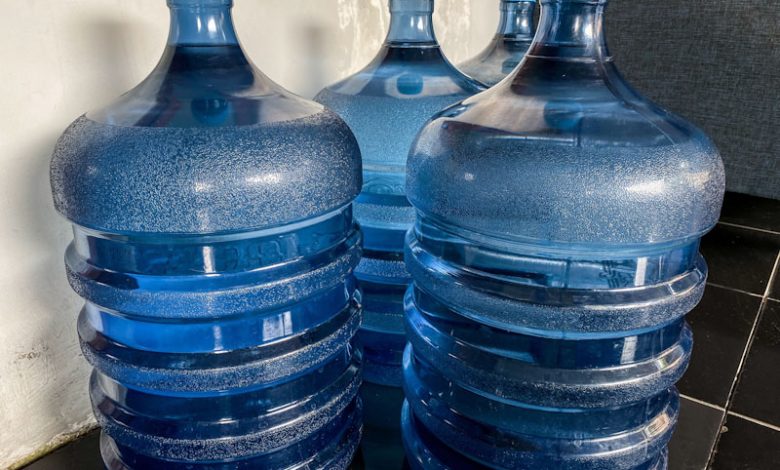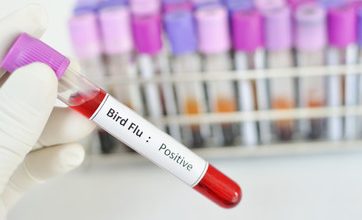Where’s Your Backup Water Source?

As we all know, water is one of our top survival priorities, having earned that prominent place by how quickly we can die without it. Although the human body is largely made up of water, it doesn’t store much in the way of water reserves. Pretty much all of the water in the body is in use, primarily filling cells, so that the necessary chemical reactions, what we refer to as metabolism, can occur.
I’ve seen a lot written about water and water supplies through the years. I’ve even written about it. Even so, I’ve always felt that most people’s water plan is inadequate. By and large, preppers count on rainwater capture for their main water supply, over and above what they have stockpiled. That’s fine for those who live in areas where there’s a lot of rain; but what about the rest of us? There are large parts of the country, where people will die waiting for the next rainfall, unless they have several thousand gallons of water storage.
This Device Easily Turns Air Into Water!
I live in such an area. There are months of the year where we have adequate rain; but in the summertime, we can go three or four months without any rain at all. There’s no way my current rainwater capture will provide me with enough water to last through those months, especially when you consider that I need to water my garden daily. I need more water than I have.
I wonder how many others are in a similar state, yet hoping that their rainwater capture system will see them through. I hate to think what will happen to them, just about as much as I hate to think about what will happen to my wife and I.
The answer to this, of course, is having a backup water supply.
So, where does that come from?
Stored Water
Most preppers look at their water stockpile as their first source of water in an emergency. I can understand this, especially in the light of all the confusion and uncertainty that goes with any disaster. There’s going to be a lot to do those first few days, switching over from normal mode to survival mode. Even so, we want to start working off harvested water as quickly as reasonably possible, so as to leave our water stockpile as intact as possible.
That switchover really shouldn’t be all that big a deal, if we already have rainwater capture in place. Our rain barrels should already be full of water, all the time. Assuming that is the case, all it should take for us to switch over to survival mode is to start filtering some of the water already contained in our rain barrels.
The more difficult part of that switchover won’t actually be the part about starting to use our rainwater; but rather that of switching our thinking to water conservation. Our concept of using only one gallon of water per person, per day, requires draconian water restrictions. Even if we are less stringent, going with five gallons of water per person, per day, it will require major shifts in our thinking and actions.
One thing we should make sure we do, as part of our switch over to survival water mode is to restock whatever water we might have used in those first days, before switching over to survival mode. If we’re going to use that water as our emergency reserve, then we don’t want to let its total volume go down any more than we have to.
Caution
One precaution we need to take with our stored water is to ensure that it can’t go bad. When we buy “purified water” from the store, it is normally considered to be 99% pure… or something close to that. But that also means that it is 1% impure. We can say something similar for any water we purify ourselves. I’ve had water that I purified grow algae, in a closed container, telling me that the water wasn’t quite as pure as I thought it was.
The longer that we store water, the greater the possibility that whatever bacteria or other microscopic pathogens are in that water will multiply, making the water even less pure. That is, it will do that if we don’t take measures to ensure that it stays pure. Adding a little bit of chlorine bleach, 8 drops per gallon of water, will keep anything from growing in that water. As long as the container remains sealed, we don’t have to worry about new bacteria being introduced or about the chlorine evaporating.
Sufficient Storage for your Rainwater Capture
Rainwater capture is the most popular means of water harvesting in the prepping world today. That makes sense, as it is easy to set up, requires little maintenance (you still have to clean leaves out of your gutters) and can be used on pretty much any style house, wherever it is located. Even in areas with little rainfall, rainwater capture is worth the time and money to install.
There’s just one problem with rainwater capture… it depends on the rain. That’s not an issue for someone living in Seattle, where it rains an average of 156 days per year; but it is an issue for the entire southwest, where it is possible to go weeks at a time, or even months at a time, without any rain at all.
It is these parts of the country which bring rainwater capture’s weakness to light. That is not the capture system itself, but storage. In the part of the country where I live, we receive an average of only 28 inches of rainfall per year. Even so, the back side of my roof would gather enough rainfall for my wife and I to survive, if I could store all the water we get during the rainy season, so as to ensure we would have water during the dry season. That would require a pretty big swimming pool. In other parts of the country, where there is more rainfall, and less dry season, it’s easier to store sufficient water to make it through to the next rainfall.
Check the average rainfall figures in the area where you live. Do you get enough rainfall to provide you with all the water you need? Don’t just think in the terms of a gallon of water per person, per day for this. That’s just for drinking and cooking. You’re going to need water for cleaning and gardening too. Make an honest, even pessimistic evaluation, including those as well. If anything, you want to err on the side of caution.
The next question is if you have enough water storage to carry you through those times when there is little rain. Think in terms of your worst-case scenario here, trying to make it through the dryest part of the year. Give yourself an extra buffer as well. If you’re not sure you’ve got enough rainwater storage, what can you do to increase it?
Local Surface Water
This brings us to harvesting local surface water. We always need a fallback plan; in case our main plan doesn’t work. The old adage of “two is one and one is none” certainly applies when it comes to the water that we need to survive. The only real question is… just what sort of a fallback plan do we have?
Unless you happen to be fortunate enough to have a well, this probably means harvesting groundwater from someplace near your home. By groundwater, I’m not referring to swimming pools, fountains and other artificial water sources. Those will be used up by the non-preppers pretty quick. What I’m referring to is lakes, ponds, rivers and streams. Maybe canals as well; but those might or might not be functioning, depending on whether electrical power is needed to open the gates and supply water to them.
We all need to be aware of every surface water source near our homes, as well as knowing if those are full-time or just sporadic water sources. If they’re just sporadic, they might not be of use when you need them; but make note of them anyway, as there’s always a chance that they will end up being useful sometime.

Okay, so how do you find this information? Besides taking walks or drives around your area, I’d recommend getting your hands on a good topographical map. That will show you every water source, including some that you might not be able to see walking or driving. Once you’ve located them on the map though, find a way to pay them a visit, so that you’ll know how to get into and out of that area.
Hauling Water
The big problem with surface water is hauling it back home. We have to consider that there will be no gas for our cars. So, unless we have a horse-drawn wagon, along with the horses, we’re going to have to count on hauling it by hand.
I don’t really mean carrying that water. Rather, I mean using a cart or wagon that we pull by hand. I have a garden wagon (think industrial version of a kids play wagon) with an 800-pound capacity. It will hold three five-gallon buckets, along with a few separate gallons. That’s not a lot of water; but I can pull it reasonably easy. The nearest surface water I can count on is about three miles from my home, on good roads. I figure I can get there in an hour and make the return trip in about twice as long. That’s a big chunk out of the day; but it is doable.
I would much rather have a closer surface water source; but I live in a rather arid part of the country. This is, at least, something practical. Better yet, it’s something I can count on. While there’s always a chance of pretty much any river drying up, especially in arid land, I estimate that the chances of that river drying up are minimal. If it does, it would probably mean the lake has dried up too. That makes my next closest surface water source 22 miles away.







